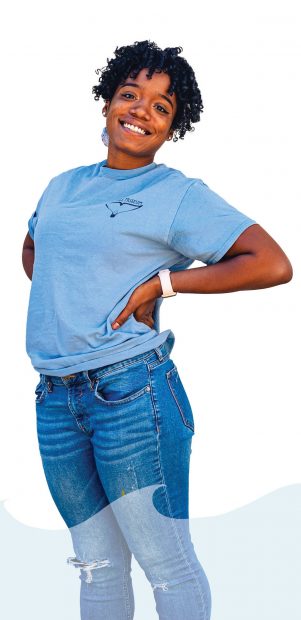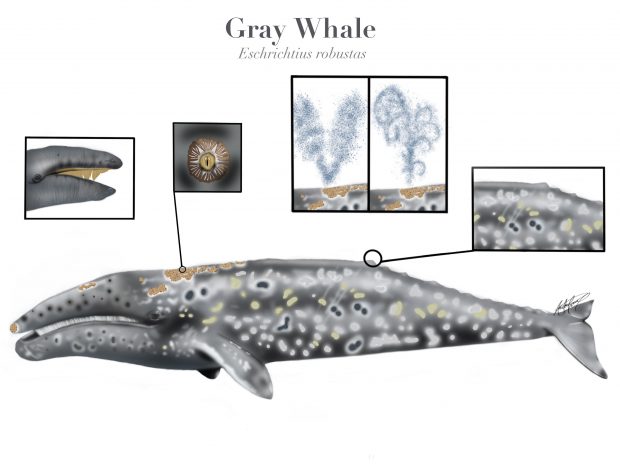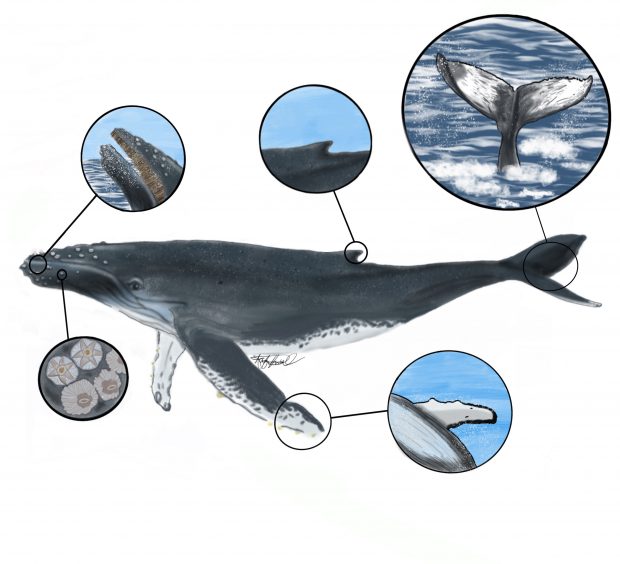 A May graduate with a degree in biology—and one of Pomona’s Commencement speakers as senior class president—Andreah Pierre ’22 has been interested in marine science and conservation for as long as she can remember. After earning a Posse Foundation scholarship followed by a prestigious summer fellowship, she will combine her STEM background with a rediscovered love of art to pursue a career as a scientific illustrator.
A May graduate with a degree in biology—and one of Pomona’s Commencement speakers as senior class president—Andreah Pierre ’22 has been interested in marine science and conservation for as long as she can remember. After earning a Posse Foundation scholarship followed by a prestigious summer fellowship, she will combine her STEM background with a rediscovered love of art to pursue a career as a scientific illustrator.
- Make your entrance near the ocean. Born in Miami, Pierre had an early affinity for the nearby Atlantic. “The best part was swimming with my sister,” she remembers. “Fish would pass by us, and we were like, ‘What are they?’”
- Stay curious. Nurture an interest in coral reefs, sea turtles and the effects of pollution as a student at South Broward High School, a marine science magnet school in Hollywood, Florida.
- Take an Advanced Placement art class and learn to paint. “The funny thing is, after sophomore year I never picked up another paint brush,” Pierre says. “My whole life was very much, you’ve got to do science, you’ve got to get a good job, and art did not seem like an option to me in terms of getting a good job.”
- Find your posse. Learn about the Posse Foundation, a program that selects talented students from the same city to attend an elite out-of-state college together on full-tuition scholarships, acting as each other’s support systems. Earn a Miami STEM Posse scholarship to Pomona, where biology students go whale watching on the Pacific.
- Apply for the prestigious Doris Duke Conservation Scholars program at the University of Washington, which provides two summers of experiential learning in the Pacific Northwest. For your second-year summer internship, join The Whale Museum staff in Washington’s San Juan Islands.
- Tasked with entering data on whale sightings reported to the museum, follow a mentor’s suggestion to develop an illustrated field guide to whales and other marine mammals to help the public tell a gray whale from a humpback. In the process, rediscover your love of art.

- Download a $10 app. After starting with a free paintbrush program, discover more sophisticated computer graphic tools that help you produce detailed images pointing out key features such as fins, flukes and surface behaviors. “What makes my field guide different from any other book you grab about whales is that the book will tell you all about the whale, versus my image is literally meant to only point out the things that you’d see if you were on the water,” Pierre says.

- Turn your summer project into your senior thesis, testing whether your field guides help people correctly identify types of whales and other marine mammals with the tips and images you provide. (The answer is yes.)
- Learn about Cal State Monterey Bay’s post-baccalaureate program in scientific illustration. Apply and get accepted for a one-year graduate certificate that starts in September, with courses such as botanical illustration, zoological illustration and professional practices for science illustrators, followed by a 10-week internship.
- Stop to watch the elephant seals at Año Nuevo State Park on a trip along the California coast and realize that state and national park signage needs science illustrations too. “A lot of them are old, the paint’s chipped and there is new information from the last 10 or 20 years that should be on there,” Pierre says. Build your portfolio as you look to follow other graduates of the Monterey Bay program, whose work can be found in such places as the Smithsonian Institution, the American Museum of Natural History, National Geographic and Scientific American magazines, and at zoos, aquariums and botanical gardens across the country.
